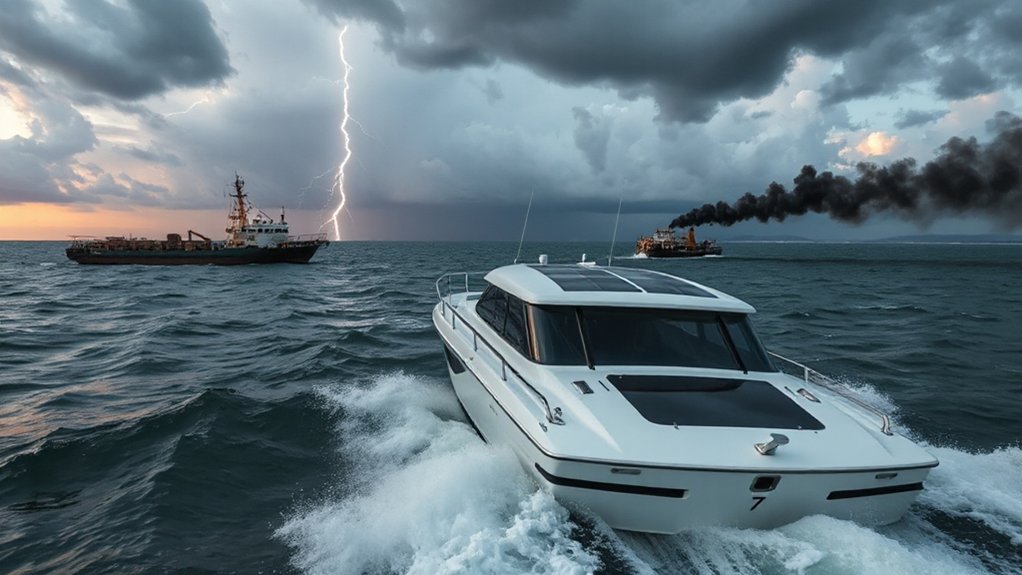While the global maritime industry has long been synonymous with fossil fuels and pollution, a quiet revolution is changing the tide. Electric boats are making waves, with the market estimated between $6.78 billion and $8.2 billion right now. Not too shabby for a technology still finding its sea legs.
Growth projections look impressive—reaching up to $22.3 billion by 2035. That’s a CAGR between 10-14%. Sounds great on paper, but the industry isn’t exactly smooth sailing yet.
Pure electric boats dominate the market, especially those in the 20-50 feet range. Weekend warriors and tourism operators love them. Why? They’re quiet. No more yelling over engine noise while trying to spot dolphins. Plus, they don’t leave that lovely film of oil on the water.
North America owns about 48% of the market. Europeans are all-in too, with their fancy “clean water” initiatives and “environmental consciousness.” Must be nice. Meanwhile, Asia-Pacific is just getting their feet wet. China is poised to become a major player with an impressive 12.1% CAGR forecast through 2035, representing a multi-billion dollar expansion opportunity.
North America dominates while Europe preens about their environmental virtue. Asia-Pacific is barely dipping a toe in the electric boat waters.
The tech keeps improving. Battery capacity, motor efficiency—all that boring stuff that actually matters. Lithium-ion batteries rule the roost, though some dinosaurs still cling to lead acid. Range anxiety isn’t just for car owners anymore!
Government incentives are driving adoption. Nothing motivates change like free money or avoiding fines. The US Bipartisan Infrastructure Law throws cash at marine transport to cut emissions. Politicians finally found something they agree on—boats shouldn’t make the planet uninhabitable.
The appeal is obvious. Lower maintenance costs, no fuel costs, and you get to feel smug about saving the planet while cruising. Win-win.
But there’s a catch. Without widespread charging infrastructure, these clean machines are limited. Try finding a charging station in the middle of a lake. Not happening. Hybrid boats currently hold the largest share of the market as they offer a practical solution to range limitations while still reducing environmental impact.
The electric boat revolution has left the harbor, but it’s steering through choppy waters of infrastructure challenges, battery limitations, and consumer hesitation. The destination looks promising—if it can stay afloat. Some manufacturers are exploring virtual power plants to integrate their charging stations with renewable energy sources, addressing both grid integration challenges and sustainability concerns.
References
- https://www.futuremarketinsights.com/reports/electric-boats-market
- https://straitsresearch.com/report/electric-boats-market
- https://www.marketresearchfuture.com/reports/electric-boat-market-11628
- https://market.us/report/electric-boat-market/
- https://www.grandviewresearch.com/industry-analysis/electric-boat-market-report
- https://www.mordorintelligence.com/industry-reports/electric-boat-and-ship-market
- https://www.fortunebusinessinsights.com/electric-boat-market-103647
- https://boatingindustry.com/features/2025/08/26/market-trends-oems-continue-to-invest-as-electric-boating-gains-interest/









